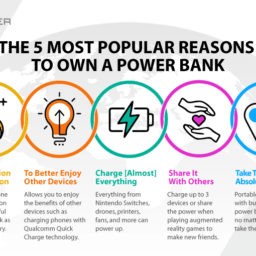
Generating Power With A Wind Mill
Wind mills are occasionally called wind turbines, and they use wind to generate electricity. They can be used for both homes and businesses. Their primary purpose is to convert kinetic energy, which is energy produced from movement, to mechanical energy which can be used to produce electricity. Basically, the wind makes the fan blades turn, creating kinetic energy, which is stored in the wind mill in a battery or is sent to something that needs that electricity. Traditionally, they have been used to pump water from deep underground or to grind grain. Today they are used to generate electricity and run just about anything.
Most modern wind turbines operate on a horizontal axis, and they tend to mirror the shape of older traditional wind mills. While they are more common, they do have to point toward the prevailing wind. Many of them can be adjusted, but if the winds are consistently variable, this design is not as effective. Vertical axis wind turbines are a good solution for situations where the wind is variable. This includes residential and commercial installations where the wind turbine needs to be located on the building’s roof.
Energy companies are investing in wind mill arrays where numerous wind mills are connected together to generate power. These arrays can be located nearly anywhere, and they are spread out over land and water. Farmers often find that they can receive incentives and tax breaks from their government to install wind mills on their property. For example, the Low Carbon Buildings Program grants homeowners up to £2500 for their wind turbine projects. Additionally, the feed in tariff applies to wind power as well as solar power. This means that you will receive a small amount of money for every kWh that your wind mill produces. You get paid both for the power that you use and the extra power that goes into the power grid.
If you are interested in installing a one on your property, you need to research your property first. The first place to start is to look up the average wind speeds for your area. This speed will help you determine how much power your wind turbine is likely to produce over the course of a year. Doing a wind survey is a good idea as well, and it will help you to determine the average wind speeds in your area. The Wind Power Density for an area tells you how much wind energy is available in a location. It is defined as the amount of power (in watts) available per square meter. This rating comes in seven different classes, and wind farms are usually erected in areas that are rated as Class 3 or higher. Class 7, for example, is 800 to 2000 watts per square meter.
Whether you are considering installing a small wind mill on your building’s roof or you want to create your own wind farm on your property, you will be investing in a great source of renewable energy that will eventually save you money as well as contributing to conserving the environment.
wind power
#Generating #Power #Wind #Mill
Will be pleased to have you visit my pages on social networking .
Facebook page here.
Twitter account is here.
Linkedin account here
Post byBedewy for info askme VISIT GAHZLY



